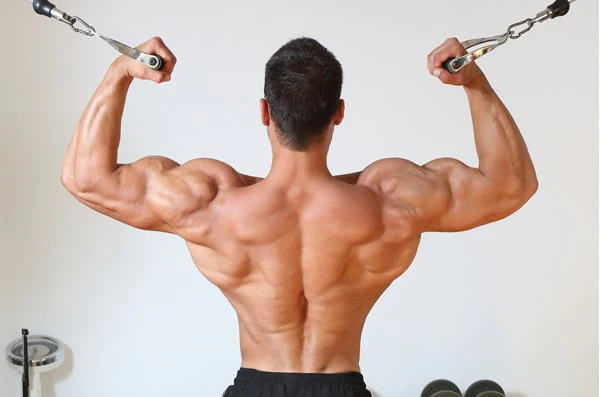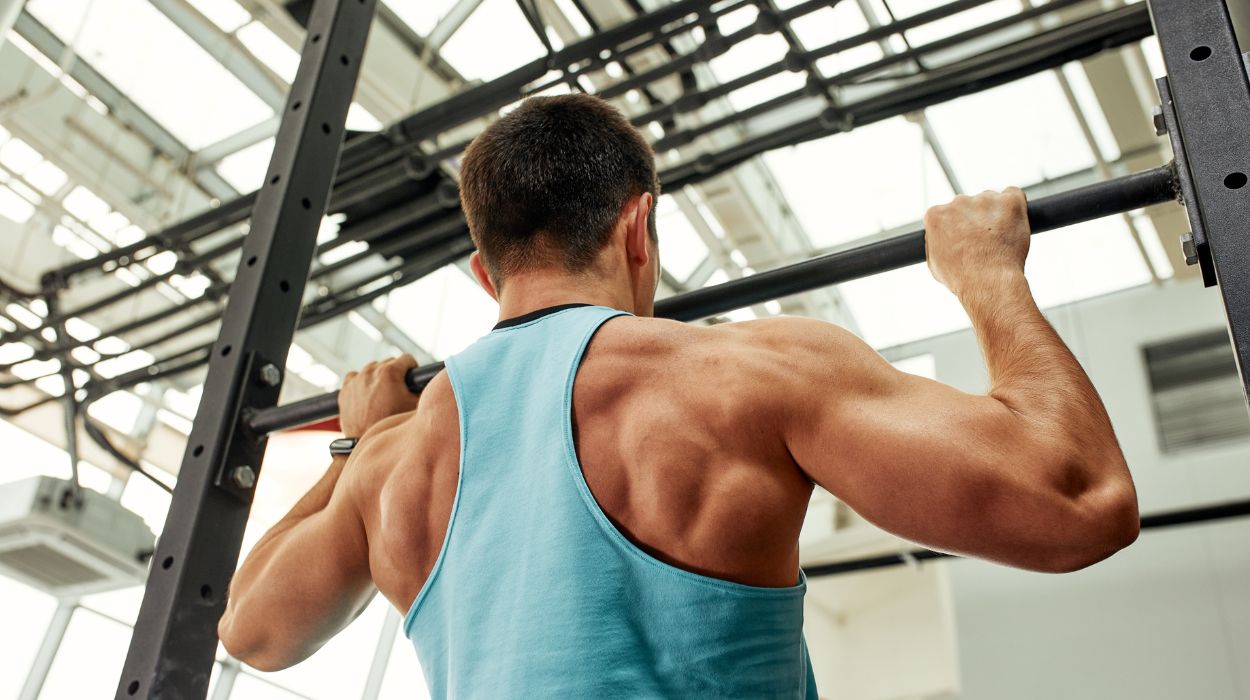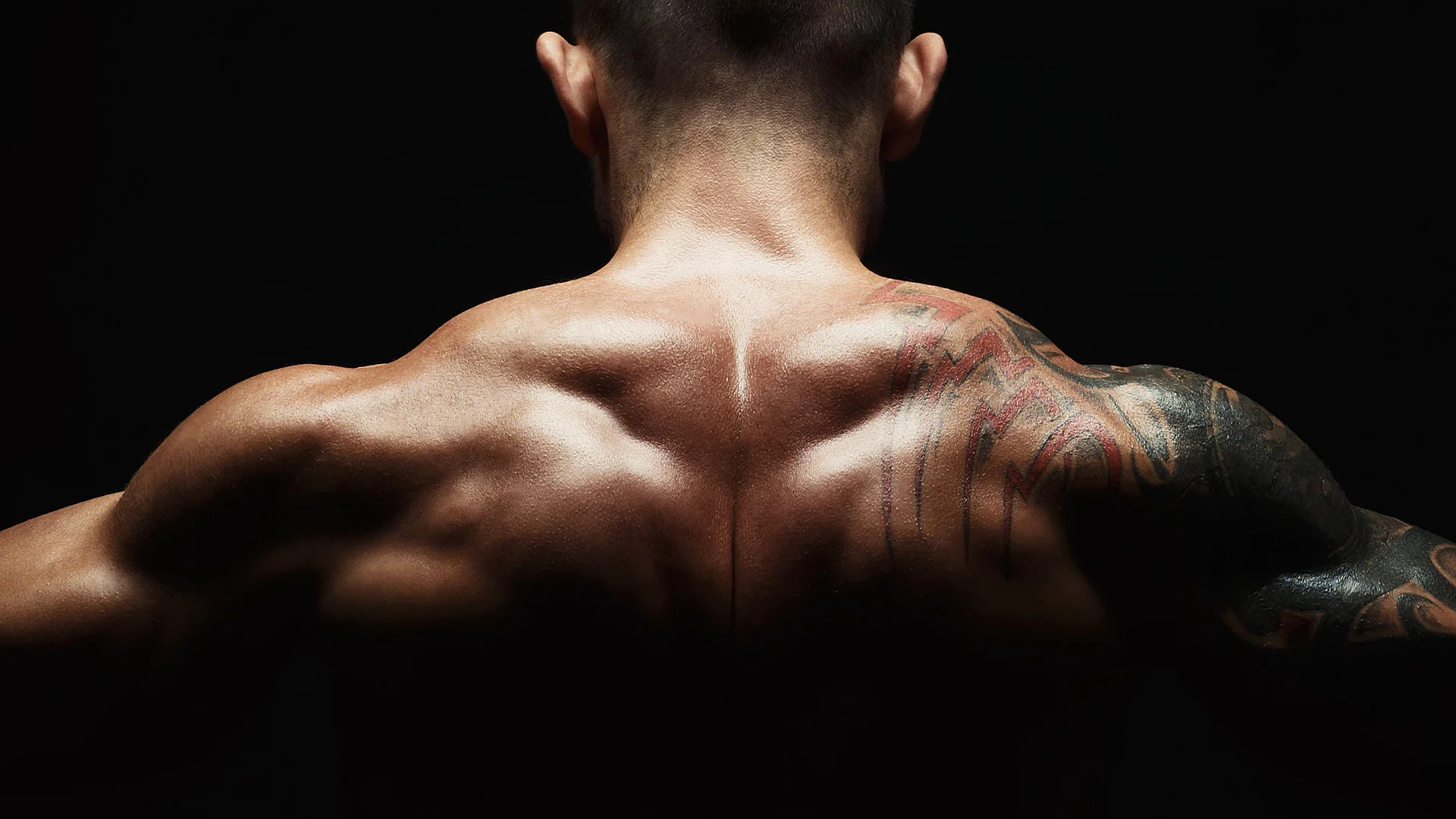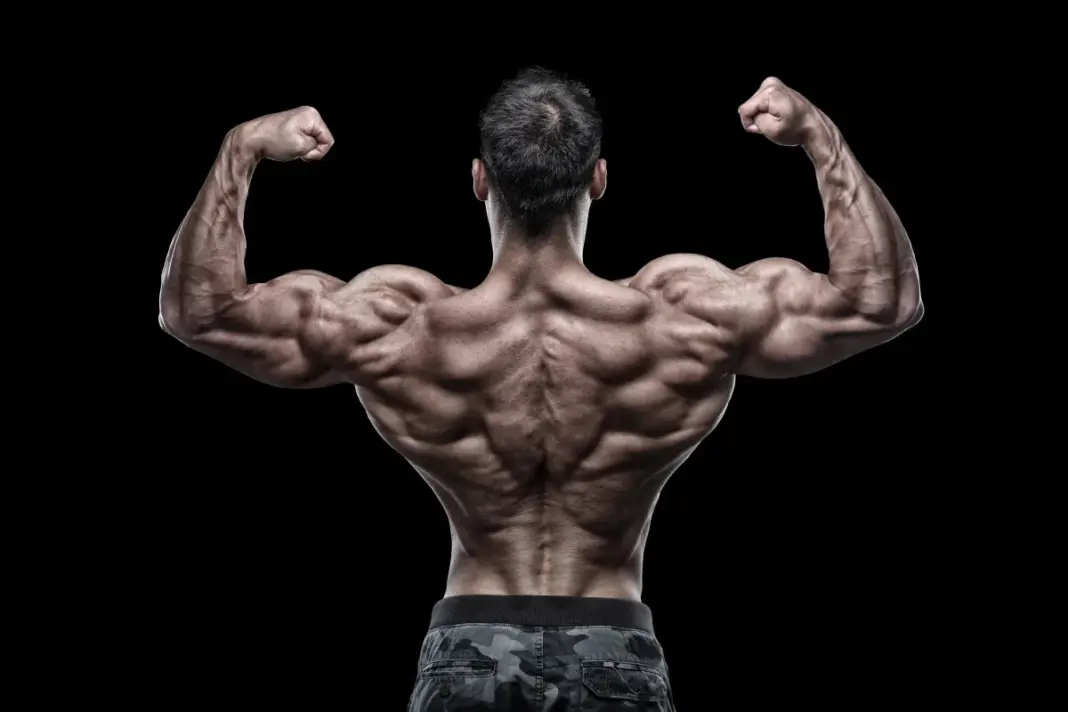Trap Training 101: Anatomy, Function, and Growth Strategy
If you want a physique that looks dominant both in a t-shirt and on stage, traps are non-negotiable. A thick, wide, and well-developed set of trapezius muscles instantly adds size to your frame, improves posture, and boosts strength in your big lifts.
Here’s the truth most lifters don’t realize:
Building massive traps takes more than just shrugging heavy weight until your neck disappears into your shoulders.
The traps are a complex, three-part muscle group with different fibers, different functions, and different training needs. If you want the full “yoke” — the kind that looks carved into your frame — you need to attack all three sections: upper, middle, and lower.
This is your complete guide to trap anatomy, function, and how to train each part for maximum size, strength, and symmetry.
Anatomy & Function of the Trapezius
The trapezius is a large diamond-shaped muscle that spans from the base of your skull down to your mid-back and out to your shoulders. It’s divided into three regions, each with distinct roles:
- Upper Trapezius
- Function: Elevates the shoulders, helps tilt and rotate the neck, and stabilizes the head during heavy lifts.
- Main Movements: Shrugs, farmer’s carries, upright pulls.
- Bodybuilder’s Tip: This is the portion that creates that “mountain range” look from the front.
- Middle Trapezius
- Function: Retracts the scapula — pulling your shoulder blades together — crucial for posture and pulling strength.
- Main Movements: Rows, face pulls, reverse fly variations.
- Bodybuilder’s Tip: These fibers give you that thick, dense look across your upper back.
- Lower Trapezius
- Function: Depresses and stabilizes the scapula, essential for shoulder health and overhead strength.
- Main Movements: Y-raises, incline shrugs, straight-arm pulldowns.
- Bodybuilder’s Tip: Strong lower traps help prevent shoulder injuries and create a more balanced, athletic back.
Why Most Lifters Fail to Build Big Traps
Despite being a highly visible muscle group, most lifters’ traps are underdeveloped. Here’s why:
- They only train the upper traps
Endless heavy shrugs might make the upper traps sore, but they leave the middle and lower fibers untouched. - They ignore posture and scapular control
Poor posture limits range of motion and reduces activation. Rounded shoulders = lazy traps. - They use momentum instead of tension
Shrugging heavy without controlling the movement turns the exercise into a bounce — not a contraction. - They skip loaded carries
Farmer’s carries and yoke walks build traps and grip strength like nothing else, but they’re often left out. - They don’t match training to function
Each trap section needs different movement patterns. Upper traps love heavy loads; lower traps prefer lighter, controlled work.
Top Trap-Building Exercises by Region
Here’s how to target each section of the trapezius with the right tools.
Upper Traps – For Size and Peak
The most visible part of the traps, creating that powerful “no-neck” look.
- Barbell Shrugs
Keep the bar close to your body, shrug straight up, and pause at the top. - Dumbbell Shrugs
Allows a neutral grip and greater range of motion. - Trap Bar Farmer’s Carries
One of the best functional builders — heavy, loaded time under tension. - Rack Pulls Above Knee
Great overload for the upper traps when done with control. - Behind-the-Back Shrugs
Shifts emphasis slightly and provides a unique stretch.
Middle Traps – For Thickness and Posture
The bridge between your upper traps and lats.
- Seated Cable Row (Elbows Flared)
Pull toward your upper stomach or chest to hit the middle traps. - Face Pulls
Cable or band version — great for both mid traps and rear delts. - Reverse Pec Deck
Excellent for constant tension and isolation. - Prone Trap Raises
Lightweight, precise, and deadly for building scapular control.
Lower Traps – For Stability and Balance
The often-ignored section that’s essential for overhead lifts and injury prevention.
- Prone Y-Raise
Light dumbbells or cables, focus on scapular depression. - Incline Dumbbell Shrugs
Forces the traps to work through a longer range. - Cable Straight-Arm Pulldown
Great accessory for both lats and lower traps. - Incline Y-Raise with Hold
Squeeze and hold at the top for maximum activation.
The Trap Training Pyramid
For complete development, think of your trap training in three tiers:
- Heavy Compound Overload
(Farmer’s carries, rack pulls, heavy shrugs)
→ Builds raw size and strength. - Moderate-Load, High-Control Movements
(Face pulls, prone trap raises)
→ Improves posture, mind-muscle connection, and balanced growth. - Isolation and Stability Work
(Y-raises, incline shrugs)
→ Strengthens weak points and supports long-term joint health.
Sample Trap-Focused Workout
You can run this as a stand-alone session or as an add-on to your pull day.
- Trap Bar Shrugs – 4 x 10–12
Heavy but controlled, 1–2 second pause at the top. - Seated Wide Grip Cable Row – 3 x 12
Focus on scapular retraction, not just pulling with the arms. - Incline Y-Raise – 3 x 15
Lightweight, full control, pause at top. - Dumbbell Farmer’s Carry – 2 x 40 seconds
Walk tall, shoulders back, grip like your life depends on it. - Face Pulls – 3 x 15
High cable, pull to upper forehead, elbows high.
Programming Strategies for Trap Growth
- Train traps directly 2x per week
One heavier, one more control/volume focused. - Balance across all regions
Include at least one exercise each for upper, middle, and lower traps per week. - Use a variety of rep ranges
- Heavy (4–8 reps) for upper traps.
- Moderate (8–12 reps) for mid traps.
- Higher (12–20 reps) for lower traps.
- Control every rep
Stretch fully at the bottom, hold at the peak. - Add loaded carries
Farmer’s walks, suitcase carries, yoke walks — they’re trap gold.
Pro Tips from a Bodybuilder’s Perspective
- Don’t let grip limit your trap work
Use straps for heavy shrugs so you can overload the traps without forearm fatigue cutting sets short. - Posture first
Every trap exercise should start with your chest tall, shoulders back, and core braced. - Tempo is a weapon
Slowing down the eccentric on shrugs (3–4 seconds) skyrockets time under tension. - Pair traps with pulling muscles
Hitting traps after back work ensures they’re already warm and primed. - Don’t overtrain
Heavy trap work can tax your CNS and grip — balance intensity with recovery.
Trap Training Mistakes to Avoid
- Only doing shrugs — leaves mid and lower traps weak.
- Overloading without control — momentum kills tension.
- Neglecting carries — they’re unmatched for functional trap size.
- Skipping posture work — rounded shoulders limit growth and increase injury risk.
- Not using full range of motion — partial shrugs = partial growth.
Final Word: Building the Yoke
If you want the kind of traps that fill out your shirt and create a presence on stage, you need to think bigger than “shrugs on shoulder day.”
Train all three trap regions. Balance heavy overload with precise isolation. Respect posture and control. And don’t forget that loaded carries might be the most underrated trap builder in existence.
The yoke isn’t just about looking powerful — it’s about being powerful. Strong traps stabilize every heavy press, pull, and carry you’ll ever do. Build them smart, build them strong, and watch your whole upper body take on a thicker, more dominant shape.
🔗 Related Articles:
- Best Neck and Trap Exercises Ranked
- Best Shrug Variations for Activation
- 30-Minute Neck & Trap Workout
- Neck Training for Bodybuilders





